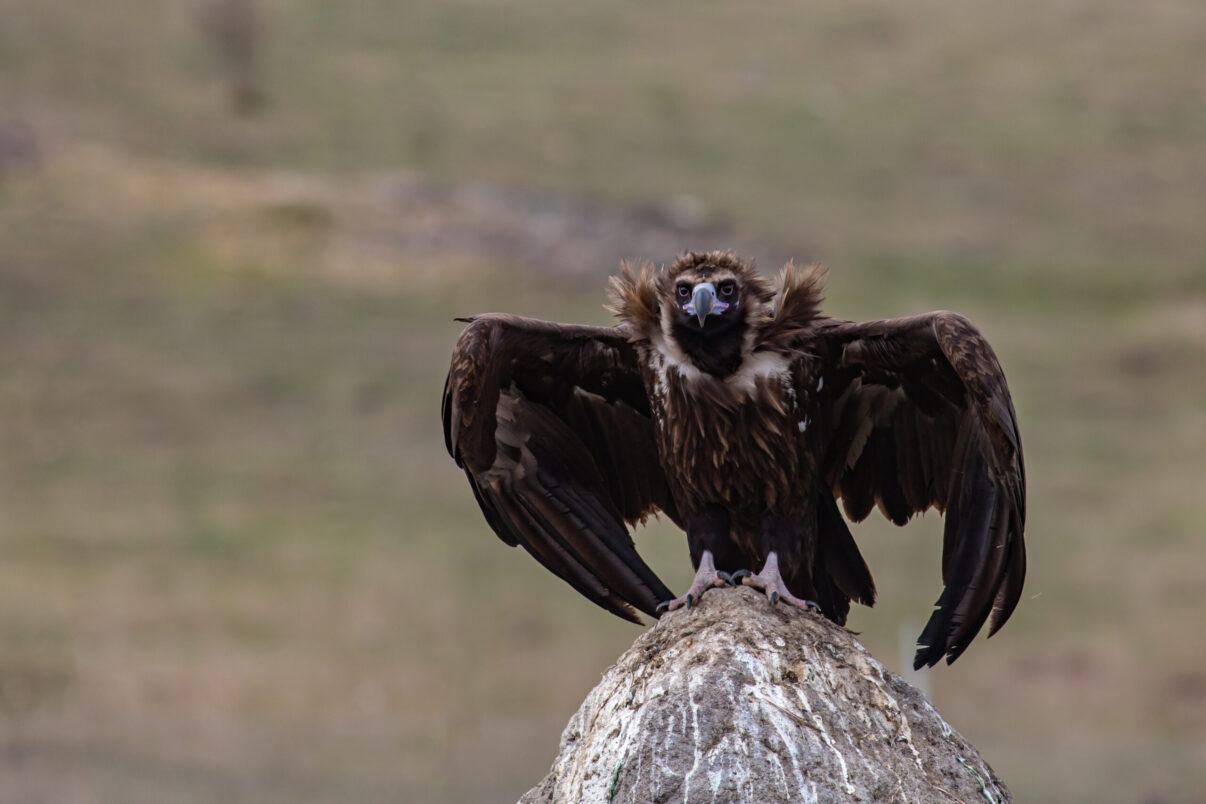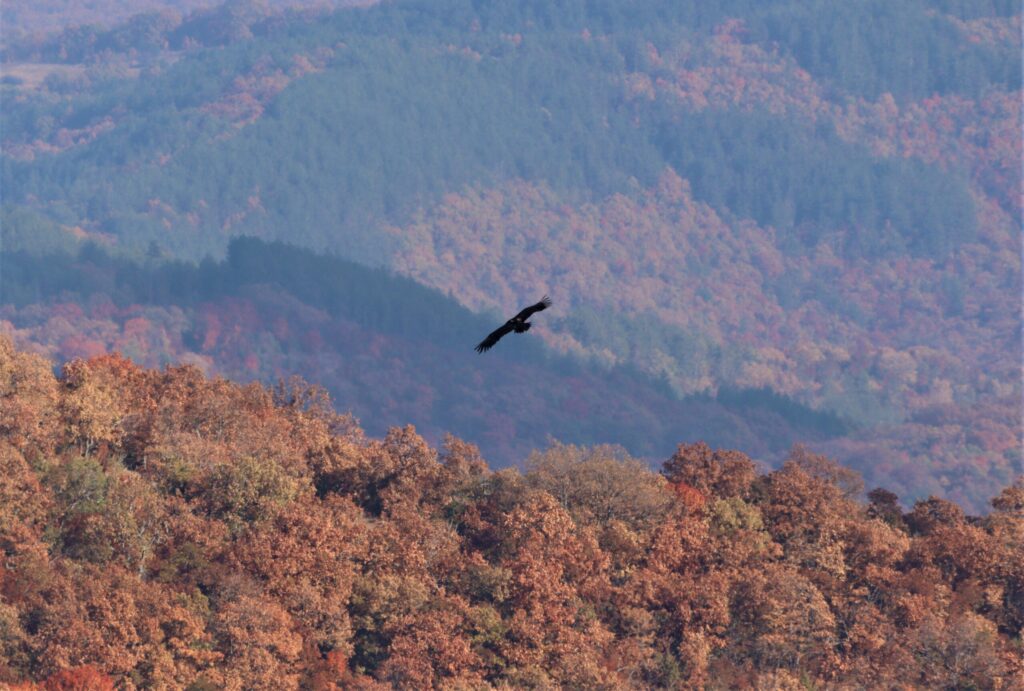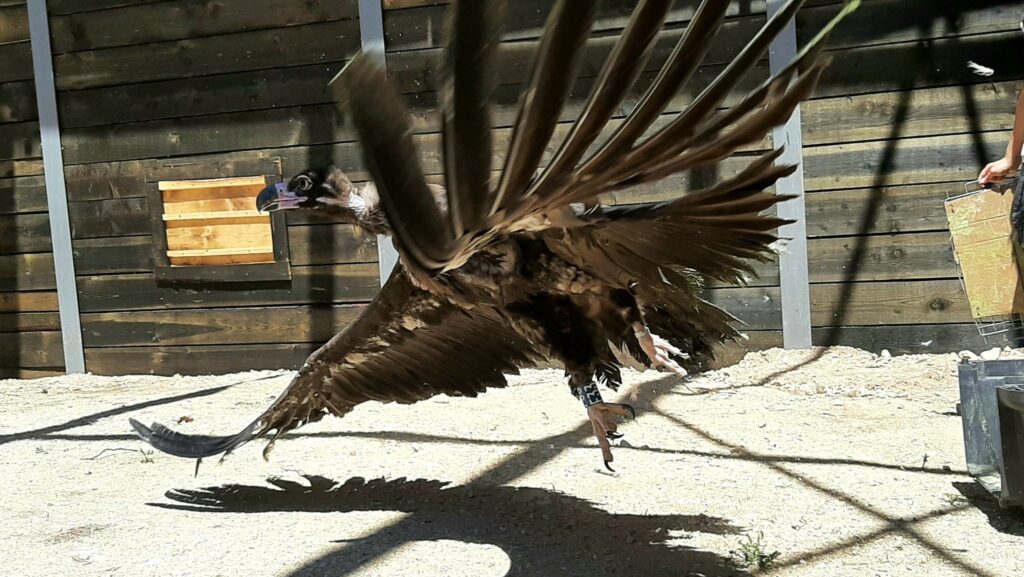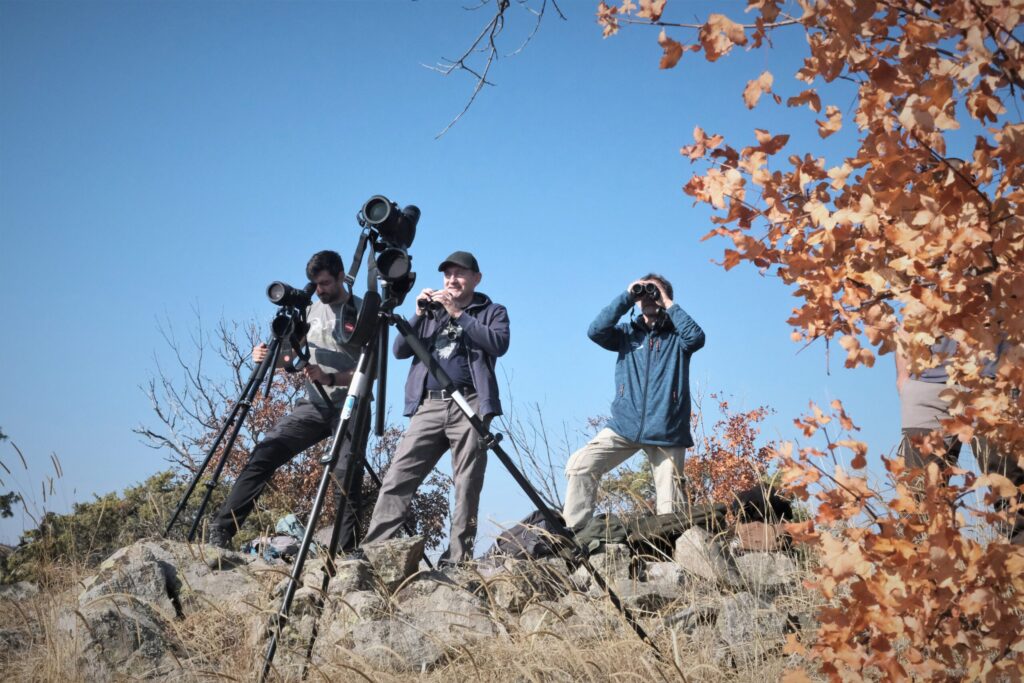Following efforts to ensure they stay, survive and thrive in the local landscape, a group of 14 cinereous vultures have just been released into Bulgaria’s Eastern Rhodope Mountains. This will help to strengthen the circle of life and represents another step towards realising the local rewilding vision.

Vultures on the rise
A hugely rewarding milestone was reached in the rewilding of Bulgaria’s Eastern Rhodope Mountains last week with the release of 14 cinereous (black) vultures. With the cinereous vulture extinct as a breeding species in the area since 1993, it is hoped that the bird – Europe’s heaviest and largest raptor – will re-establish itself as a keystone species within the local ecosystem. As part of the rewilding vision for the landscape, their return promises to restore a vital part of the so-called “circle of life”. It also strengthens hopes that these iconic and ecologically important birds may once again soar across the breadth of European skies.
“This is a historic moment for the cinereous vulture in Bulgaria and Europe, and a critical step towards a wilder Rhodope Mountains,” says Dr. Volen Arkumarev, a vulture expert from the Bulgarian Society for the Protection of Birds (BSPB), which oversaw the release, together with members of the Rewilding Rhodopes team and other partners. “The days and weeks after the release are critical for these inexperienced birds and we will continue to monitor them as they learn to roost and return to feed. Eventually, they will become strong enough to make longer flights and forage for naturally occurring food.”

Comprehensive preparations
Before the cinereous vulture reintroduction could go ahead, a positive site survey was essential – this showed that any released birds would have a good chance of surviving and thriving in the local landscape. Cinereous vultures were once common across the Balkan region, but factors such as poisoning, a lack of food, and collisions with power lines led to the disappearance of populations from many countries. Over the last few years the Rewilding Rhodopes team has worked hard to boost the availability of natural food for vultures and neutralise threats to their safety.
The 14 released birds, which were originally sourced from Spain, had spent the previous six months in a specially built aviary between Madjarovo and Ivaylovgrad. Constructed with funding from cosmetics retailer LUSH, this allowed them to adapt to their new environment. All efforts have been made to ensure the birds settle in the area after their release – human contact has been minimised, the vultures have been sustained on food they are likely to find locally after their release, and ten artificial nests have been constructed on trees within sight of the aviary.

A stress-free transition
The newly released vultures, which are all between two and three years old, enjoyed a smooth transition from their captive life to life in the wild. The release team carefully opened the doors to the birds’ aviary, there was no other human disturbance in the area, and food was placed in front of the enclosure. The vultures were given the opportunity to leave the aviary at their own pace, when they felt safe and calm.
“The young vultures ventured outside the aviary one after the other and started exploring their surroundings on the very first day,” says Dr. Volen Arkumarev. “One stayed overnight in the aviary during the first night and left the following day.”
For now, all the birds remain close to the release site and are making short training flights. The presence of griffon vultures in the area is helping their successful adaptation, and they have already been visited by two wild cinereous vultures from the colony in Dadia National Park, across the border in the Greek part of the Rhodope Mountains. All the released birds have been tagged with GPS transmitters, which will allow the Rewilding Rhodopes team to keep track of their health and movement in real-time.

Future focus
As part of an ongoing reintroduction programme, an additional six to 10 cinereous vultures are scheduled to be released annually in the Eastern Rhodopes over the next few years. The establishment of a colony in the Eastern Rhodopes will support the survival of the species in the Balkans – an exchange of birds is expected with the last surviving breeding colony of about 25 to 30 pairs in Dadia National Park, and with newly formed breeding colonies in Bulgaria’s Stara Planina (Balkan) Mountains. The restoration of food chains will also enhance the health and resilience of the Rhodopean landscape, while the presence of the birds will hopefully boost nature-based tourism.
